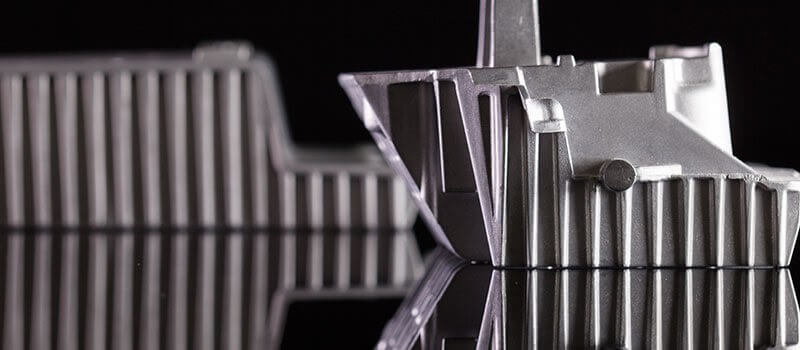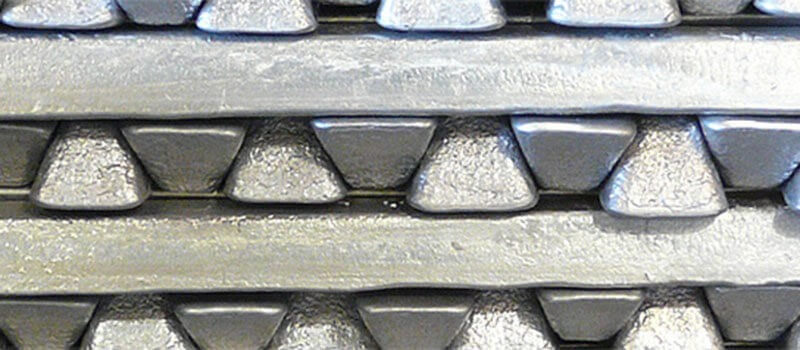An Overview of the Basics of Aluminum Die Castings
Aluminum is known for being lightweight and durable, making it one of the most popular materials for producing functional parts and prototypes. It also has impeccable corrosion resistance, thermal and electrical conductivity, and maintains dimensional stability even in high temperatures and harsh environments. Aluminum castings are one of the products of Accurate Performance Machining, Inc.
Due to the high melting point of this special metal, the best way to cast aluminum parts is to utilize the aluminum die casting process. This metal casting process forces molten metal into a die cavity under high pressure. Aluminum die casting requires the use of a die cavity, which is made from two hardened tool steel dies that are machined into a specific shape. Aluminum die casting uses a cold chamber machine.
Aluminum die casting reduces the steps required for production and prototyping, ultimately reducing manufacturing costs, while also providing parts with a high-quality surface finish and excellent dimensional consistency. The technology is particularly beneficial in small and medium-sized castings and is widely used in industries such as automotive, aerospace, medical, and more.
However, there are some key factors you should keep in mind in order to optimize part quality in the aluminum die casting process. With these tips, you can make the most of Xavier’s professional-grade aluminum die casting services while gaining a better understanding of this extremely popular manufacturing technology.
1.Understand All Design Aspects and Geometric Features
Before a designer or engineer can fully utilize aluminum die castings, they must first understand the design limitations and common geometric features that can be achieved with this manufacturing technique. Here are some of the factors that should be kept in mind when designing aluminum die castings.
① Draft Angle
In aluminum die casting, draft angle is considered the slope imparted to the core or other parts of the cavity, which makes the casting easier to eject from the mold. If your die casting is parallel to the opening direction of the mold, draft angle is a necessary addition to the casting design. If you optimize and implement the appropriate draft angle, it will be easier to remove the aluminum die casting from the mold, thereby improving accuracy and achieving a higher quality surface.
② Fillet
A fillet is a curved connection between two surfaces that can be added to aluminum die castings to eliminate sharp edges and corners.
③ Parting Line
The parting line is the joining point between the two sides of the aluminum die casting mold. The parting line location indicates the side of the mold that serves as the lid and ejector.
④ Boss
When adding bosses to aluminum die castings, these bosses will serve as mounting points for parts that need to be installed later. To optimize the integrity and strength of the boss, the wall thickness should be the same throughout the casting.
⑤ Ribs
Adding ribs to aluminum die castings will provide more support for designs that require maximum strength while still maintaining the same wall thickness.
⑥ Holes
If you need to add holes or windows to your aluminum die casting mold, you need to consider the fact that these features will grab the mold steel during solidification. To overcome this, designers should integrate ample draft angles into the hole and window features.
These are just the basics you should know when designing for aluminum die castings. If you want to optimize your molds further, you can contact Xavier’s expert manufacturing team for help.

2.Understanding the Lifespan of Aluminum Die Casting Molds and Tools
If you decide that aluminum die casting is the right choice for your production needs, you should understand the lifespan and maintenance required for aluminum die casting molds. The lifespan of a mold is difficult to determine because it depends heavily on many factors. You need to keep in mind a variety of aspects, including the design of the part, the tool steel used for the mold, the mold configuration, heat treatment, the aluminum alloy being used, the required part quality, and more.
Thankfully, when using Xavier’s aluminum die casting expert manufacturing services, our team will help ensure that each of these conditions is met accordingly.
3.Extending the Life of Aluminum Die Casting Dies with Heat Treatment
One of the best ways to extend the life of aluminum die casting dies is with the use of heat treatments and die coatings. By applying these techniques, hot cracking will be greatly slowed, ultimately extending the life of the die. Of course, you must factor in the additional cost of these coatings and decide if it’s worth it to extend the life of your aluminum die casting dies.
When it comes to heat treatment, there are many crucial aspects to consider, such as the heat treatment furnace used, the number of temperings performed on the die, and the quenching rate used during the heat treatment process. At Xavier, we offer personalized aluminum die casting and heat treatment services that best suit each customer, helping you achieve the perfect balance between economy and part quality.
4.Choosing the Right Aluminum Alloy
It’s clear that aluminum die casting dies are made from… aluminum. However, the aluminum alloy selected is a critical part of the process. Each alloy type offers different mechanical advantages and disadvantages, and the right choice depends entirely on the function of the part. To help you better understand the materials available, here are a few of the most popular alloys used in aluminum die casting:
① Aluminum Alloy A380
One of the most commonly used alloys for aluminum die casting, it has excellent fluidity, pressure resistance, and resistance to hot cracking.
② K-Alloy
This special material is a cold chamber die casting alloy specifically designed for parts that must withstand harsh environments.
③ Aluminum Alloy 383
This alloy can be a great alternative to A380 when your design is more complex, as it has better corrosion resistance and is lightweight.
④ Aluminum Alloy B390
This alloy has high hardness and excellent wear resistance compared to other available materials.
⑤ Aluminum Alloy A413
This easy-to-cast alloy is ideal for parts that require excellent pressure sealing, such as hydraulic cylinders.
⑥ Aluminum Alloy DCA1
This alloy is a perfect choice when you need to make parts with high thermal and electrical conductivity, such as radiators.

5.Consult Manufacturing Experts About Aluminum Die Casting
Last but not least, if you are interested in incorporating aluminum die casting into your product development process, don’t be afraid to consult with experts in manufacturing and rapid prototyping services. For example, at Xavier, we have experts who understand the best practices of aluminum die casting, helping you optimize part design and quality after final production. Whether you get stuck in the design phase or don’t know which aluminum alloy to use, our team of experts is always here to guide you through this complex manufacturing process.
